NSF BioPACIFIC MIP
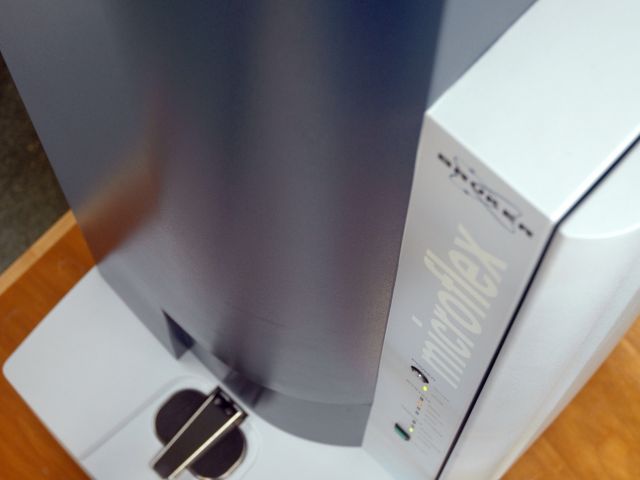
MALDI TOF
This MALDI TOF can be used for the analysis of a broad range of compounds
including small molecules, peptides, proteins, nucleic acids, and synthetic polymers.
The Microflex accepts 96 spot target plates. The matrix assisted laser desorption
ionization (MALDI) source operates with a 60 Hz nitrogen laser at 337 nm.
The instrument has a mass range of up to 20,000 m/z in reflectron mode or
500,000 m/z in linear mode. Additionally the instrument is capable of mass
spectral imaging. Polytools software is available for the analysis of polymer
data.
Institution: UC Santa Barbara
Research Areas: Characterization and Properties
Data Viewer
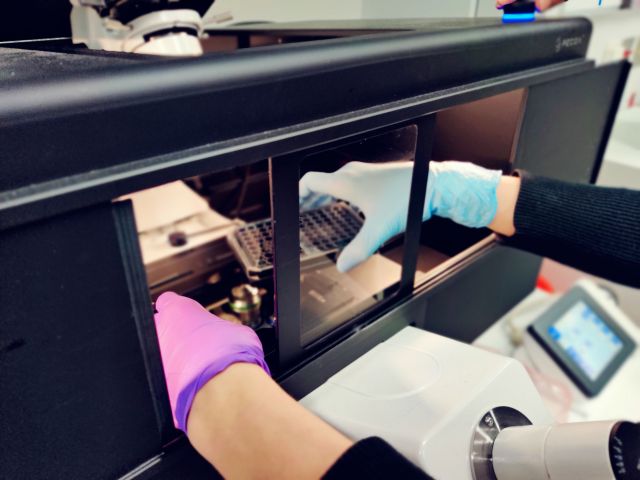
Microrheology
The custom-built microrheology platform enables the rapid analysis of material
viscoelasticity and provides insights into microstructure, emergence
of phase transitions, material stability, and the presence of intermolecular
interactions. The system includes motorized stages for high-speed scanning through
multi-well samples, and imaging- and scattering-based tools
for detection of material fluctuations or deformations under loading.
User-friendly software facilitates rapid post-processing and data analysis.
Institution: UC Santa Barbara
Research Areas: Characterization and Properties
Data Viewer

SAXS/WAXS System
A state-of-the-art liquid gallium X-ray source and a large-area pixel array
detector are the key components of a fully dedicated small and wide-angle X-ray
scattering (SAXS/WAXS) system. The high brilliance liquid metal jet X-ray source is
a newly developed X-ray microfocus source that can increase the X-ray flux by 10X,
which is crucial for measurements on weakly scattering biological and polymeric samples.
The pixel array detector has single photon counting sensitivity and a large active area
(5X larger) which dramatically increases the speed of data collection.
Institution: UC Santa Barbara
Research Areas: Characterization and Properties
Data Viewer

Shimadzu Nexera Hybrid HPLC
The Shimadzu Nexera Hybrid HPLC system at BioPACIFIC MIP combines analytical chromatography for method
development and fraction re-analysis with a preparative HPLC for fraction collection, eliminating the
time-consuming tasks involved in moving samples and fractions between normally separate systems.
The HPLC system at BioPACIFIC MIP further improves upon the typically UV-based fractionation processes and
subsequent off-line mass spectrometry (MS) by inclusion of an inline single quadrupole MS detector.
Institution: UC Santa Barbara
Research Areas: Characterization and Properties, Synthesis and Formulation
Data Viewer
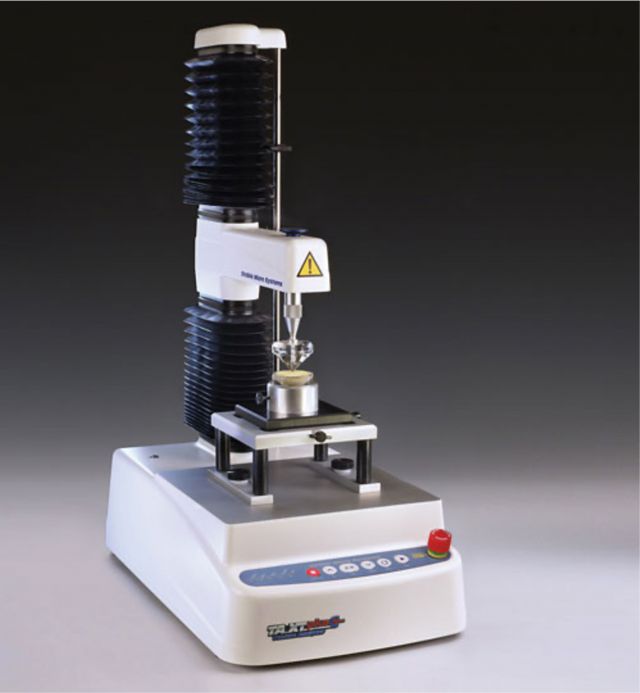
Texture Technologies Texture Analyzer
The Texture Technologies Texture Analyzer (TA) provides mechanical
testing capabilities for soft materials, including small-strain
contact mechanics (E, τporo, adhesive Gc),
uniaxial compression (E, W, σf, τ, hysteresis), uniaxial extension
(E, W, τ, σmax, εf, hysteresis), pure shear
tests (E, W, Gc, fatigue, hysteresis), peel tests
(Gc, crack velocity), lap shear tests (adhesive strength),
puncture tests (Γo, Pc, k'E), and beam bending
(E, σf). The TA can resolve ~1 mN of force via a 50 N
load cell, and can accommodate scanning speeds of 0.01-40 mm/sec
over a distance of up to 370 mm and with a 1 µm displacement resolution.
Institution: UC Santa Barbara
Research Areas: Characterization and Properties
Data Viewer
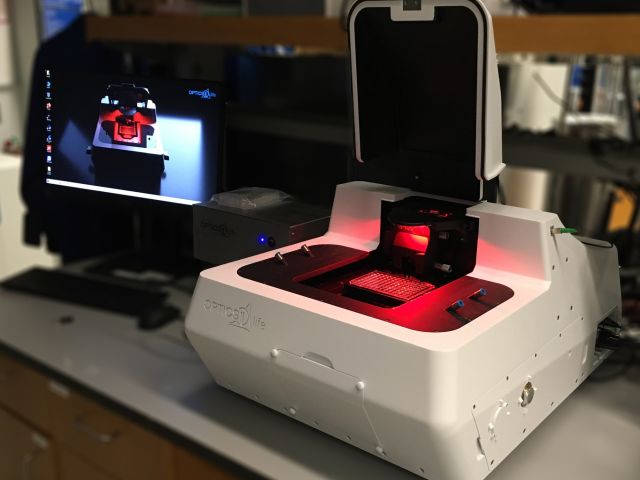
Optics11 Pavone
The Optics11 Pavone is a high-throughput mechanical characterization tool
(modulus, adhesion, creep, stress relaxation). The instrument allows for testing
of up to two 96-well plates in a single run, with Brightfield and Phase imaging capabilities.
Institution: UC Santa Barbara
Research Areas: Characterization and Properties
Data Viewer
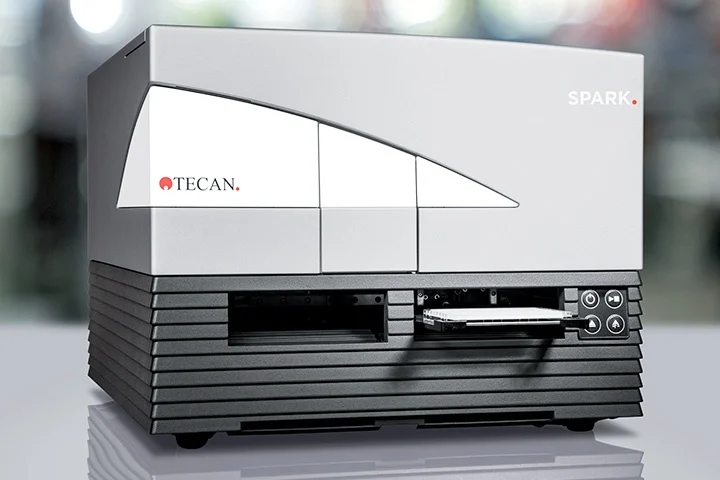
Tecan Spark Microplate Reader
The Living Biofoundry (LBF) at UCLA is an automated,
high-throughput platform for gene assembly, amplification, transformation,
strain growth, and metabolite analysis enables the production of bio-based monomers and
polymers with precise repeat units, domains and chirality directly from microorganisms.
The LBF's Tecan Spark is a versatile microplate reader, capable of measuring fluorescence,
absorbance, and luminescence, as well as cell confluency and cell number.
Institution: UC Los Angeles
Research Areas: Characterization and Properties
Data Viewer
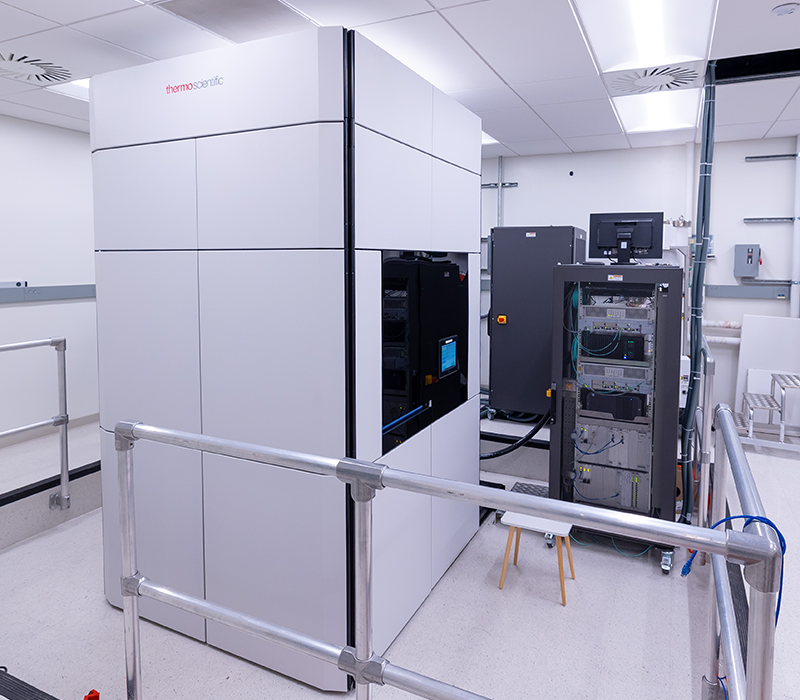
Spectra 300C Microelectron Diffraction
MicroED excels at detecting atomic periodicities smaller than 1 Å and ab
initio determination of molecular structures at this scale. Better than ~0.8 Å periodicities
can be determined in crystal too small to be analyzed using traditional x-ray techniques.
MicroED structure solutions reveal all atoms in an assembly, even hydrogens and for
semi-crystalline biopolymers, and regions of local order/disorder are revealed.
Importantly, in the best of cases, these structures can be rapidly determined (within 1h)
from powders. Thus, the promising materials generated from the foundry
(both small molecules and polymers) can rapidly be characterized by this novel electron
diffraction technique.
The Spectra 300C is a next-generation high-stability transmission electron microscope.
The Spectra’s high brightness X-CFEG field emission gun offers high current in a focused
electron probe for 4DSTEM acquisition. This tool is equipped with the latest software
and hardware to enable rapid microED data collection at either room temperature or
liquid nitrogen temperature.
Institution: UC Los Angeles
Research Areas: Characterization and Properties
Data Viewer